The Economic & Geopolitical History of Tunisia Part 1: A story of Phoenician, Roman, German, Byzantine, Arab, Amazigh and Turkish Rule
A Deep Dive into Tunisia’s Economic and Geopolitical History Before French Rule

In my opinion, one of the most underrated events in human history was the Arab Spring, which started in Tunisia. Today it’s largely dismissed as a failure. As of Feb 2025, no Middle Eastern country has transitioned to a wealthier, more robust state as a result of their protests. Maybe none will, maybe Syria will, but history is long.
When Henry Kissinger asked Chinese Premier Zhou Enlai about the impact of the French Revolution, Zhou famously replied, "too early to tell." While this was later revealed to be a misunderstanding—he was actually referring to the 1968 student protests in France—the phrase took on a life of its own, symbolizing the slow unfolding of history.
By that logic, the true impact of the Arab Spring may not be clear for generations. The French Revolution (1789) was crushed, but its ideas resurfaced across France & Europe in 1830, 1848, and 1871. Similarly, the Arab world may see future uprisings—though I don’t think they will necessarily follow Europe's path. They could lead to something better or worse. Regardless, it all began in Tunisia, and today, we’ll explore its story.
Tunisia, a lower-middle-income North African country, fares better than many African nations but lags behind its Middle Eastern counterparts in wealth. It’s squeezed between much larger countries like Algeria and Libya, and has 12M people.
Tunisia’s name comes from the city Tunis, the country’s capital. The name, Tunis, either comes from the Berber/Amazigh root meaning to “encamp” for travelers, or the word is related to a deity that Phoenician settlers worshipped called tanit. The country is 98% Arab-Amazigh(Berber), and most people live near the coasts to the Mediterranean sea.
As of 2023, the average Tunisian lives up to 78 and has 2.1 children per women (barely at replacement rate). The average Tunisian makes $3830 a year, if you consider that prices for goods and services are relatively cheaper, at purchasing power party, Tunisians’ average annual incomes are close to $12,150. It is a major-non NATO ally of the United States, and the country is the size of Louisiana or Greece. Tunisian living standards have not grown over the past 10 years.
Before delving more into Tunisia's modern economy, it's crucial to understand its deep-rooted history, which shaped its trade, culture, and political identity.
Traditional History of Tunisia
The Amazigh (Berbers), North Africa’s indigenous people, lived as pastoralists around 1200 BC, shaping Tunisia’s early history.
Carthage (814 BC- 146 BC)
In 814 BC, Phoenicians from Tyre (modern-day Lebanon) established Carthage, which grew into a dominant maritime power. The Romans, which emerged in 753 BC, referred to them as Punic and became their biggest rival. Initially, they were able to establish trade & peace treaties, but the two Mediterranean powers ended up in war. At its height, Carthage controlled much of Spain, North Africa, and Southern Italy. Unlike Rome, which expanded through conquest, Carthage built its empire through trade in gold, ivory, dried fish, and slaves. They also practiced child sacrifice.
Carthage took slaves and mercenaries from Berber tribes (Numidians), Europeans (Celts, Iberians, Gauls, Greeks), and Sub-Saharan Africans from the Trans-Saharan slave route. They also brought olive trees to Africa.
The native Berbers (Amazigh) lived under semi-autonomous tribal rule but were often mercenaries, slaves, or second-class farmers in Carthaginian society. They traded and intermarried as well. Some gained social mobility, but Carthage remained a Phoenician-ruled oligarchy with a senate and judiciary.
Rome & Carthage clashed in the Punic Wars (264–146 BC) over trade routes and territorial control.
First Punic War: Rome vs. Carthage (264–241 BC)
War began over control of Sicily, sparked by the mercenary Mamertines.
Carthage’s naval dominance initially crushed Rome, but Rome reverse-engineered a captured Carthaginian Quinquereme, building a fleet with the Corvus, a boarding bridge for hand-to-hand combat.

Rome won the Battle of Cape Ecnomus (one of history’s largest naval battles), invaded North Africa, and enslaved 20,000 Berbers. Eventually, Rome blockaded Sicily, forcing Carthage to surrender, ceding Sicily and paying heavy reparations.
Aftermath: Berber Revolts & Expansion (241–237 BC)
Unable to pay its Berber mercenaries, Carthage faced the brutal Mercenary War. During this war, Rome seized Sardinia and Corsica.
Leader Hamilcar Barca, rebuilt Carthage by conquering more of Spain/Portugal and enslaving locals to mine silver, funding war debts.
Rome and Carthage agreed on spheres of influence for conquest in Europe, but tensions remained.
.Second Punic War (218–201 BC): Hannibal’s Revenge
Hamilcar attacked an Spanish tribe, Sagunto, which was a Roman protectorate, which led to the Second Punic War.
Hamilcar’s son, Hannibal, crossed Spain, slaughtered tribal resistors, and led ~100K troops across the Alps—tens of thousands of Hannibal’s troops died on the trek.
Hannibal recruited Celtic warriors (European tribesmen), crushed Rome at Cannae (216 BC), and killed 20% of Rome’s male population.
Rome refused to surrender, shifting from direct warfare to Fabian Maximus’ Fabian Strategy (attrition tactics).
Rome recaptured Sicily & Sardinia, prevented Greek Macedonian aid, and launched counteroffensives in Spain & North Africa.
Roman Scipio the Younger conquered Spain (206 BC) and allied with Numidian (Algerian) King Masinissa to invade Carthage’s African territories.
At Zama (202 BC), Scipio defeated Hannibal, forcing Carthage to surrender, lose territory, and become a Roman client state. Scipio the Younger earned the title ‘Scipio Africanus’ after conquering Carthage, with ‘Africa/Ifriqiya’ originally referring to the Amazigh ‘Afri/Ifri’ tribe.”
Third Punic War (149–146 BC): Carthage Destroyed
Carthage, stripped of its military, rebuilt its economy but violated Rome’s treaty by attacking Numidian raiders. Rome declared war, launching a three-year siege.
In 146 BC, Scipio Aemilianus breached the city, leading to street-by-street slaughter. The city of Carthage’s 300,000 population was reduced to 50,000 slaves. The city was razed, its lands annexed as Roman Africa.
As a result, as of 146 BC, the place we call Tunisia is now a Roman Province called Africa.
West (Numidia) & East (Roman Africa Proconsularis) (146 BC - 439 AD)
After Carthage’s destruction in 146 BC, its former territory was divided between the West & East:
The West: Numidia – A Berber kingdom that allied with Rome during the Punic Wars and was rewarded with Carthaginian territory. At the time, Rome thought Numidia would be best governed through a local client state. However, under King Jugurtha (112–105 BC), Numidia rebelled against Rome but was ultimately defeated, and Rome installed puppet rulers. Numidia remained a client state until King Juba I sided with Pompey against Julius Caesar in the Roman Civil War. After Caesar’s victory in 46 BC, Rome annexed Numidia, incorporating it into the province of Africa Nova (New Africa).
The East: Roman Africa Proconsularis – The newly established Roman province, covering modern-day Tunisia and parts of Libya. The province became one of Rome’s most important breadbaskets, producing grain, olives, and livestock for the empire. Roman cities like Carthage, Thugga, & Dougga flourished, with Roman-style forums, amphitheaters, and aqueducts. Rome tried to Latinize the Berber tribes, but Berber identity remained strong.

Other key developments included:
Jewish Migration - After fall of Jerusalem in 1st century AD and the Jewish Revolts in the 2nd century, many Jews migrated and ended up in Tunis.
Christianity’s Rise (3rd–4th Century AD) – North Africa became a Christian center, producing thinkers like Tertullian, Cyprian, and Saint Augustine.

Political Stability & Revolts – While mostly peaceful, occasional revolts occurred, such as the Gordian Revolt (238 AD) against Emperor Maximinus Thrax.
The Fall of Roman Africa (439 AD)
The Roman province remained stable until the Vandal Invasion of 429 AD. The Vandals, a Germanic tribe led by King Genseric, crossed into North Africa from Spain and captured Carthage in 439 AD, turning it into the capital of their Vandal Kingdom.
Germanic Vandal Kingdom (439 AD - 534 AD)
After the collapse of Roman rule in North Africa, the Vandals, a Germanic tribe, established a kingdom in present-day Tunisia, with Carthage as their capital. In 442 AD, Romans signed a treaty with the Vandals, recognizing their Germanic rule over Carthage.
Key Features of Vandal Rule:
1. Killing Christians & Romans: The Vandals followed Arian Christianity (Christians who reject the Trinity and believe Jesus is distinct from God). The Vandals persecuted the Berber and Roman Christians, including exile, property confiscation, and forced conversions.
2. Pirating: Genseric launched pirate attacks across the Mediterranean, including the sack of Rome in 455 AD, where they looted the city. The Vandals then took control of Corsica, Sardinia, Sicily, and the Balearic Islands, strengthening their dominance at sea.
3. Berber Resistance & Internal Conflict
The Vandals never fully controlled Berber tribes in the interior, leading to constant border skirmishes. Also, the region got poorer under Germanic rule.
The Fall of the Vandal Kingdom (533–534 AD)
The Byzantine Emperor Justinian I sought to reconquer lost Roman territories. In 533 AD, the Byzantine Empire launched an invasion from Constantinople and destroyed the Vandal Kingdom. North Africa was annexed into the Byzantine Empire.
Byzantine Africa (534 AD - 698 AD)
After the Byzantine (Eastern Roman) Empire reconquered North Africa here’s what they did:
1. Byzantine Reconquest
The Byzantine Empire under Justinian & Maurice reestablished Roman law, administration, and military control. Carthage was rebuilt as the administrative center of Byzantine Africa. Justinian strengthened Catholic Christianity, and persecuted Vandals (who were Arian Christians), Monophysite Christians (Christians who said Jesus was only Divine, and never human), and Donatists (Berber Christians who thought the Catholic Church was corrupt).
Mass deportations – Many Germanic Vandals deported to Persia (Iran)
2. Issues with Berbers
Many Berbers, who had previously been Christianized under Rome, became disillusioned with Byzantine rule due to heavy taxation and religious persecution. Many Berber Tribes rebelled against the Byzantines, while some Berbers “Romanized” and continued to export grain, olive oil, ceramics, and textiles to Constantinople.
3. Arab Attacks and Conquest
The first Arab-Muslim invasion of Byzantine Africa occurred in 646 AD, the Rashidun Arabs defeated Byzantines at the Battle of Sufetula. Due to internal tribal rivalries, the Rashidun Caliphate was destroyed, and was replaced by Muawiya Ibn Abi Sufyan’s new Umayyad Caliphate from Damascus(modern day Syria) in 661 AD.
In 665 AD, Umayyads launched a full-scale invasion of Byzantine North Africa, and won in 698 AD.
Umayyad Ifriqiyyah (698 AD - 750 AD)
During the Umayyad rule, Kairouan (from the Persian word caravan) was the provincial capital of “Ifriqiyyah” (Africa, which meant Tunisia, East Algeria, and Western Libya at the time).
Waves of Arabs came to the region. Berbers initially hated Umayyad Arab rule and rebelled, but after they were crushed, many Berber Christians & Pagans converted to Islam (some voluntarily, others converted to avoid the jizya tax or slavery). After many revolts, a group of Berbers called the “Kharijite Movement” tried one last rebellion called the “Great Berber Revolt”. The Umayyad Arabs crushed the revolt by 743 AD.
Unfortunately for the Umayyads, they faced rebellions across the Islamic world. By 750 AD, the Abbasids overthrew the Umayyads in a Revolution.
Abbasid Ifriqiyyah & its Vassals the Aghlabids (750 AD - 909 AD)
Ruling from Baghdad (in modern day Iraq), the Abbasids struggled to control distant Ifriqiyyah amid Berber rebellions. Stability came with the Aghlabids (800–909 AD), when the Abbasids appointed Ibrahim ibn al-Aghlab as hereditary governor. Though nominal vassals, the Aghlabids governed independently, offering only symbolic tribute to Baghdad.
Developments under Aghlabid rule
Kairouan: A Center of Learning – Kairouan became a leading Islamic intellectual hub, home to doctors like Muhammed ibn-al-Jazzar. Al-Jazzar’s work ‘Zad al-Mussafir’ was translated to Latin and influenced medical advances in Europe.
Sicilian Conquest (827–902) – The Aghlabids invaded Sicily, launching a century-long war against the Byzantine Empire, leading to Arab rule in parts of the island.
Trade – The dynasty expanded Mediterranean trade, exporting textiles, ceramics, and olive oil while benefiting from trans-Saharan trade in gold, ivory, and slaves. Wealthy Arabs would finance a caravan and purchase enslaved people from the Wagadou Ghana Empire in West Africa and distribute the slaves in markets in North Africa, the Middle East, and Persia. The caravan riders were usually Berbers or a Berber sub-group called the Tuaregs.
Arabization & Islamization of Berbers – The Berber population became increasingly Arabized and Islamized, though tribal revolts persisted.
Decline & Fatimid Overthrow (909 AD)
By the late 9th century, corruption, taxation, and Berber unrest weakened Aghlabid rule. The Shia Fatimid movement, led by Abu Abdallah al-Hussein, gained support among discontented Berbers and launched Jihad against the Aghlabids in 909 AD, establishing the Fatimid Caliphate.
Ifriqiyyah under the Fatimid Caliphate & its Vassals the Zirids (909 AD - 1148 AD)
The Fatimids, made their capital Mahdiyya. The Fatimids spread Shia Islam in Ifriqiyyah, challenging Sunni orthodoxy and Arabizing more of the Berber population.

The state conducted Mediterranean trade, connecting North Africa to Egypt and Sicily. But in pursuit of greater power, the Fatimids conquered Egypt and founded Cairo in 969, making it their new capital.
By 972 AD, the Fatimids left Tunisia under the control of their Berber vassals, the Zirids.
Zirid Rule (972–1148):
The Zirids, initially loyal to the Fatimids, governed Ifriqiyyah semi-autonomously from Kairouan but mismanaged the economy. Agricultural decline forced farmers and pastoralists into banditry, and gold reserves ran dry. Seeking support from urban Sunni Arabs, Al-Mu’izz ibn Badis renounced Shia Fatimid rule in 1040, reverted to Sunni Islam, and recognized the dying Abbasid Caliphate in Baghdad.
The Hilalian Invasion (1051–1057): Ifriqiya Devastated
Angered by the Zirids’ betrayal, the Fatimids unleashed the migration of 300K Banu Hilal and Banu Sulaym—Bedouin Arab tribes from the Arabian Peninsula—into Ifriqiyyah. (Before they ravaged Berber North Africa, they ravaged Egypt for years).
In the words of the Tunisian Arab, Ibn Khaldun, he likened the Arab Bedouin invasion to a “swarm of locusts”. These warriors ravaged cities, pillaged farms, and devastated the Kairouan, accelerating Tunisia’s Arabization and collapsing Zirid rule. Many Berbers adopted a nomadic lifestyle and assimilated into Arab culture.
With the Zirids weakened by the devastating Bedouin Arab invasions, Tunisia’s political and economic stability collapsed. This left coastal cities exposed to foreign intervention, allowing the Normans of Sicily to briefly establish a foothold in the region.
Final Decline & Norman Invasion (1148)
After decades of instability, Tunisian & Libyan coastal cities were conquered by the Normans of Sicily under Roger II in 1148, ending Zirid rule. Shortly after, the Almohads of Morocco expelled the Normans, integrating Tunisia into their empire.
Almohad Caliphate’s Ifriqiyyah (1148 AD - 1230 AD)
The Almohads, a Berber dynasty from Marrakesh, Morocco, expanded their empire across North Africa and Spain. Tunisia became part of this vast Sunni conservative empire, which ruled from Portugal to Libya.
The Almohads had strong contact with the Ghana & Gao empires, and the trans-Saharan trade expanded more (Black Africans sell gold, ivory, & slaves, while Berbers sell salt, weapons, & textiles).
Decline & the Rise of the Hafsids
By the early 1200s, the Almohads weakened due to internal struggles and military defeats in Spain against Christian kingdoms. In 1230, the Almohad governor of Ifriqiyyah, Abu Zakariya al Hafs, declared Tunisia independent, founding the Hafsid Dynasty and ending Marrakesh’s influence in Ifriqiyyah.
Hafsid’s Ifriqiyyah (1230 AD - 1574 AD)
Under Hafsid rule, Tunis became a major intellectual hub, attracting Andalusian Muslim exiles & Sephardic Jews fleeing Spain after the Reconquista. The historian Ibn Khaldun, a pioneer of historiography and sociology, was born here.
In addition, the Hafsids expanded commercial ties with Genoa, Venice, France, Norway, and Aragon(Spain), exporting textiles, grain, and olive oil.
Lastly, Ifriqiyyah expanded buying more gold, ivory, and slaves from the Mali Empire, using Berber and Tuareg caravan networks.
Decline & Internal Struggles
By the 15th century, the Hafsids began to weaken due to internal civil wars, succession disputes, and outside powers.
Hafsid corsairs frequently raided European ships and enslaved them, prompting the Habsburgs of Spain and Austria-Hungary to intervene. By the 1500s, Spain, Austria & Ottoman Turkey fought for control over Tunisia.
1534 – The Ottoman admiral Hayreddin Barbarossa captured Tunis.
1535 – Spain’s Emperor Charles V retook the city and installed a puppet Hafsid ruler. (Note: As you can see, Sunni Muslim Tunis was allied with Catholic Spain against Sunni Muslim Turks. Not all wars are over religion!).
1569 - Turks took back Tunis
1574 – The Ottomans, under Sultan Selim II, permanently seized Tunis, ending Spanish-Hafsid rule and integrating Tunisia into the Ottoman Empire.
Ottoman Turkish Tunisia (1575-1881)
Pasha Era (1574-1591):
The Ottoman Turks conquered Tunis. The Turks divided their North African territory into three regencies - Algiers, Tunis, and Tripoli (Libya). A Regency was governed by an Ottoman Pasha, a governor appointed from Istanbul. A Janissary garrison (Conscripted European Slaves of Ottoman Turkey) was stationed with firearms in Tunis to maintain control. The Janissaries collected government revenue that either came from taxing Berbers (which they despised) or raiding Spanish ships and then selling Europeans for ransom or on slave markets. However, conflict arose between the Janissaries and the local Berbers in Tunis, leading to instability.
Dey Era (1591-1631):
In 1591, after feeling that they weren’t paid enough, the Janissaries overthrew the Pasha system. They installed a Dey (military governor) and reducing Ottoman control to a formality.
Bey Era & Muradid Dynasty (1631-1705):
The Muradid dynasty, founded by former Corsican (French) slaves, took control of Tunis in 1631 under nominal Ottoman oversight. Its only obligation to the Ottoman Sultan was to provide troops during wartime; otherwise, Tunis functioned independently. The Beys of Tunis, alongside those of Algiers and Tripoli, became notorious Barbary pirates, raiding European ships and coastal towns. Over a million Europeans were enslaved, ransomed, or sold in Tunisian slave markets.
Ransom payments became a diplomatic tool, with European powers negotiating for captives or paying tribute to avoid pirate raids.
The Muradid rule ended in 1675 with Murad II’s death, sparking the Revolutions of Tunis, a period of assassinations and chaos. Spain attempted to reconquer Tunis, while Algiers sought control over North Africa. Decades of instability led to Janissary Ibrahim Sharif, backed by the Ottomans, eradicating the Muradids to restore order, only to be overthrown by the Regency of Algiers. This paved the way for Al-Husayn ibn Ali, a Greek Mamluk(a slave soldier), to assume power with Ottoman approval, founding the final Tunisian dynasty, the Husainids (1705–1957). But we will continue discussing Tunisia next time.
Concluding Insights
Tunisia’s history is one of foreign conquest and cultural adaptation. From the Phoenicians and Romans to Germans to Greek Byzantines to Arabs to Ottoman Turks, the region was repeatedly shaped by imperial forces, yet its Berber population managed to carve out periods of autonomy.
In Part II, we will finish up talking about Tunisia under Turkish rule and then explore French colonization & independence. We’ll examine how Tunisia’s colonial past shaped its modern economic and political landscape.










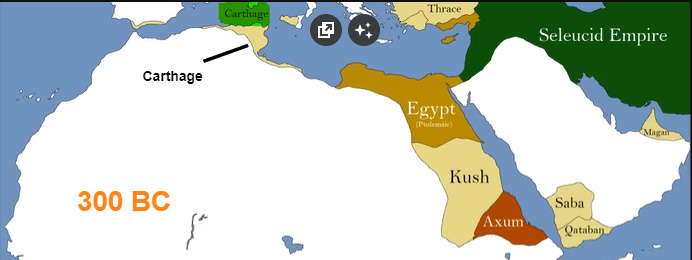

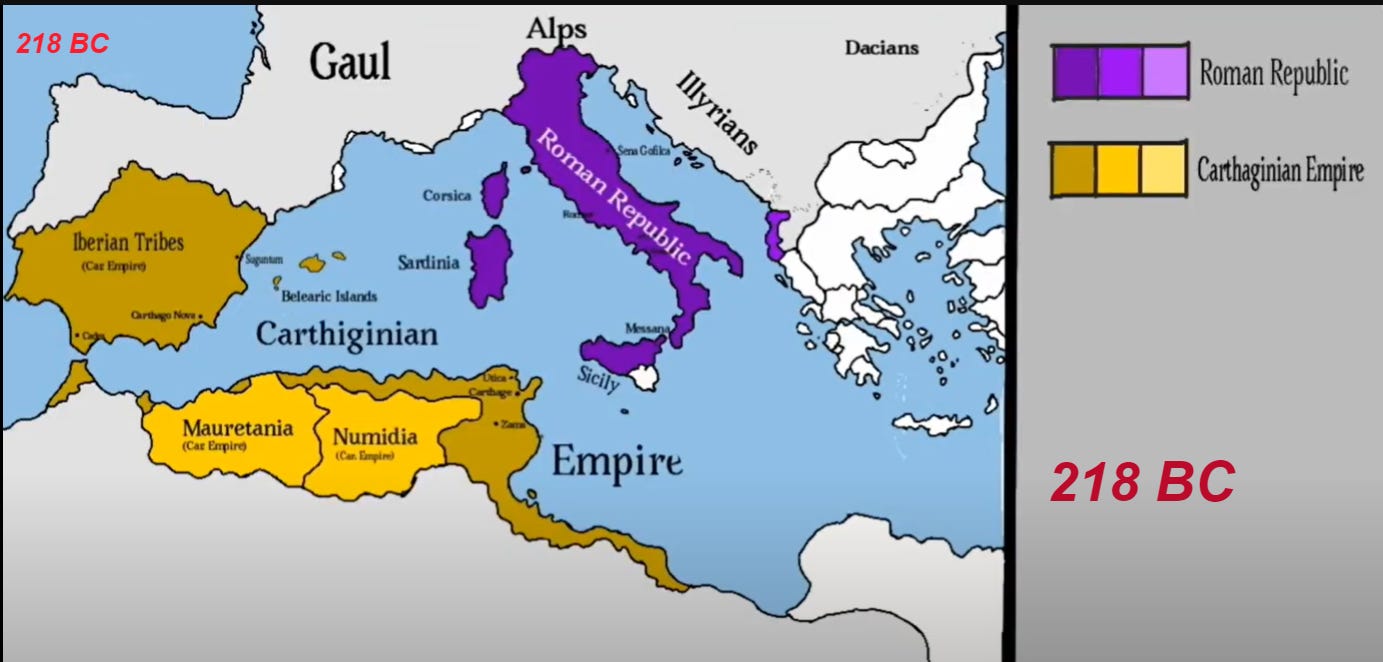


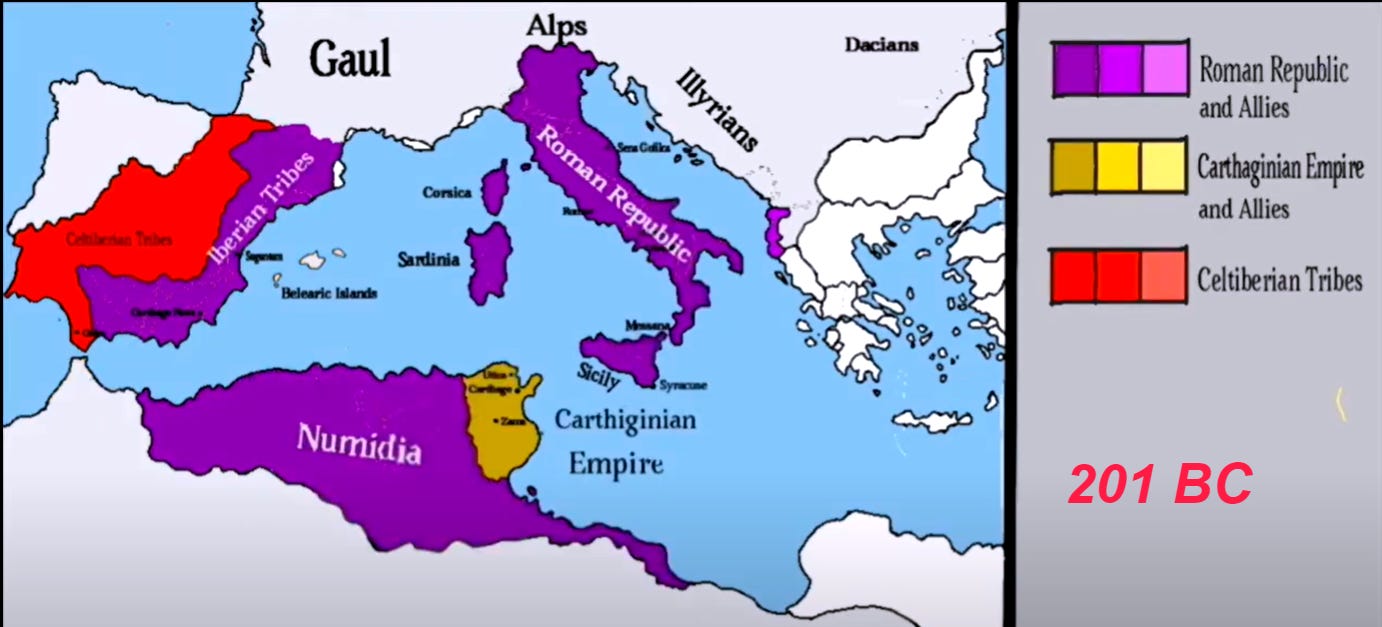





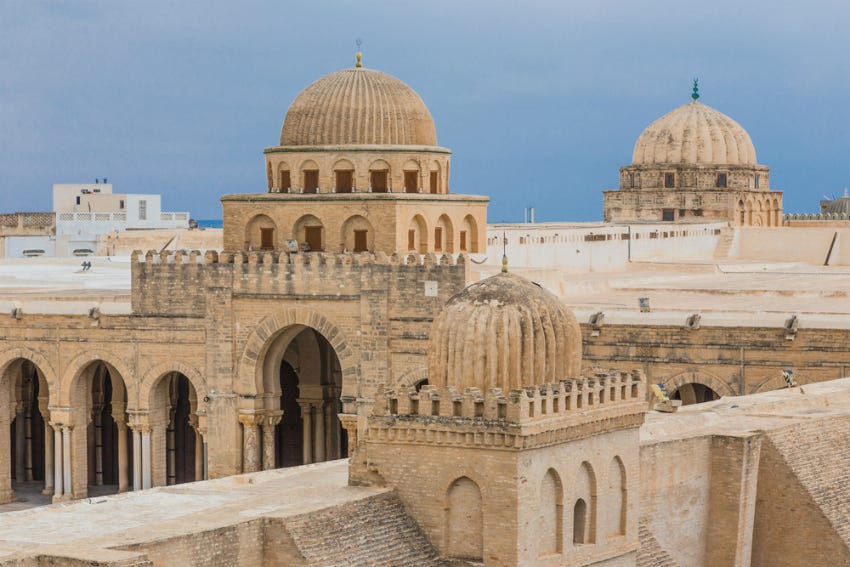


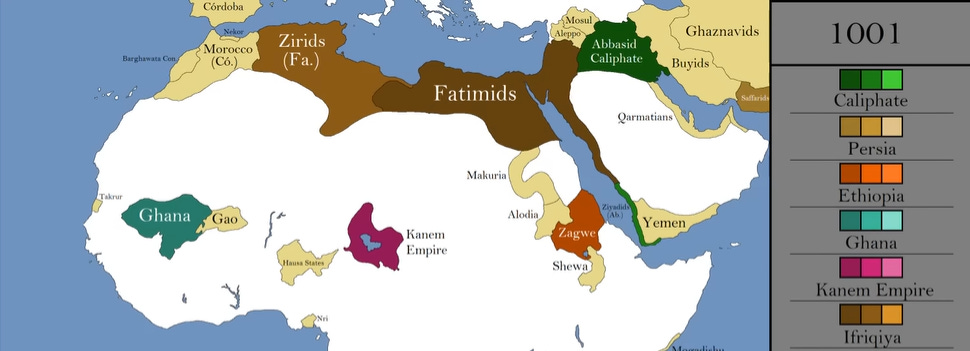






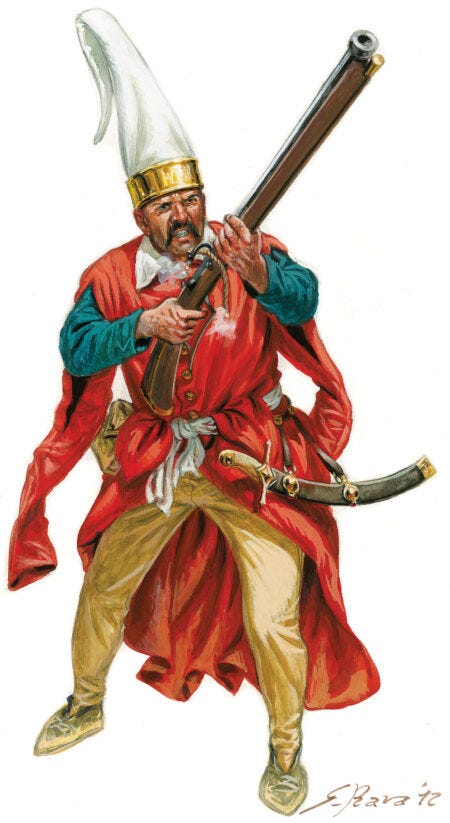

It never ceases to amaze me that the history of many regions is one imperial conquest after another…
Love reading the history.